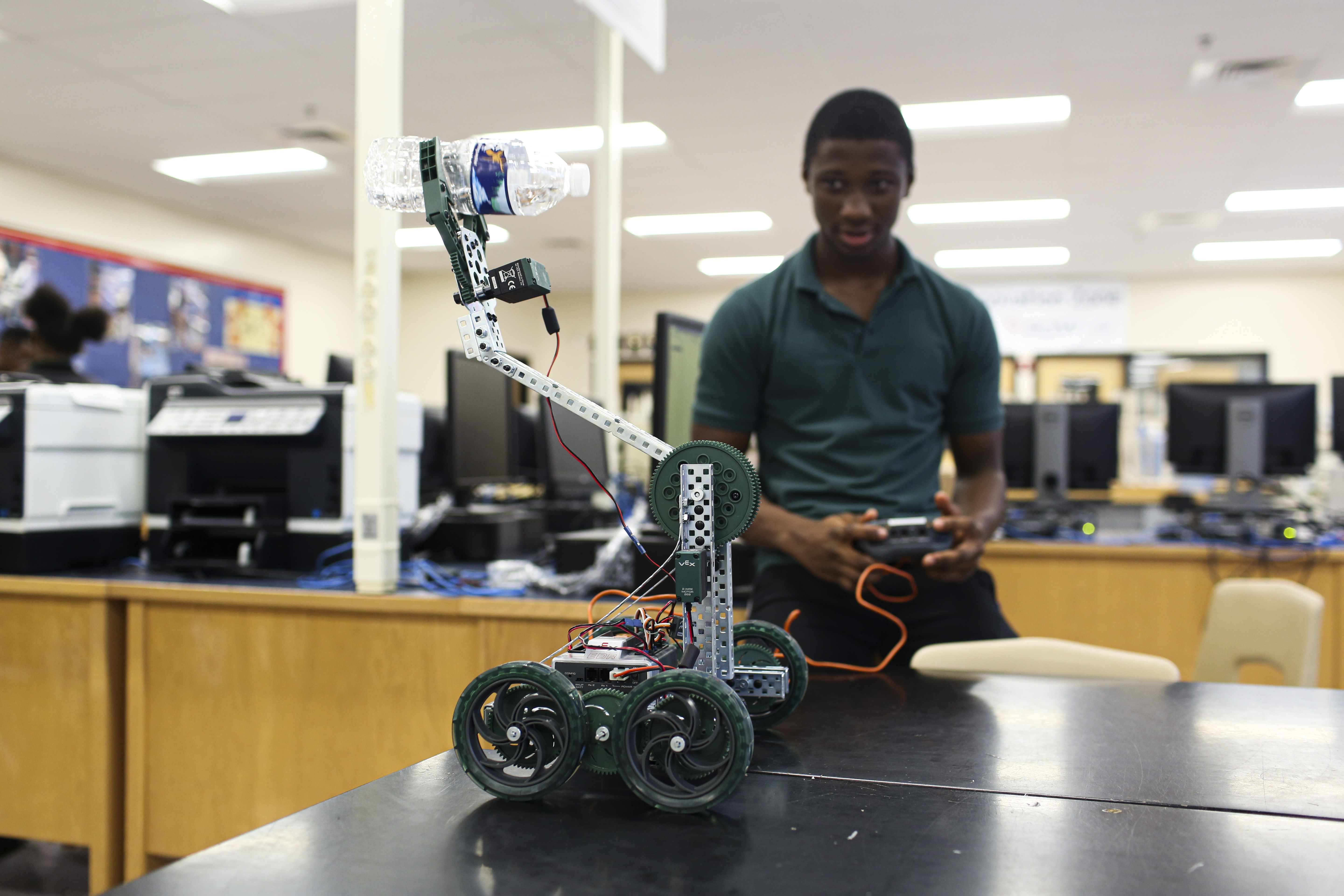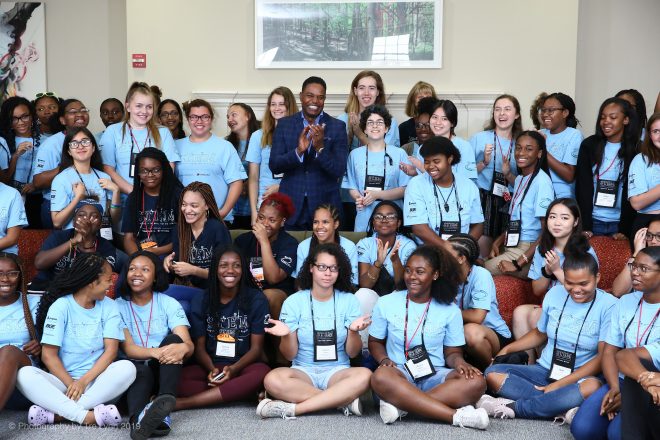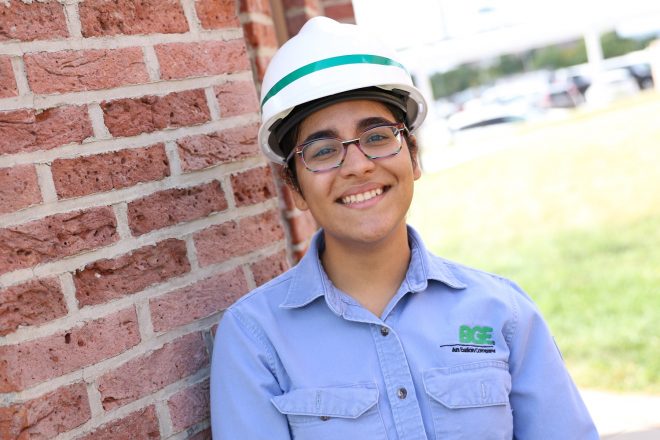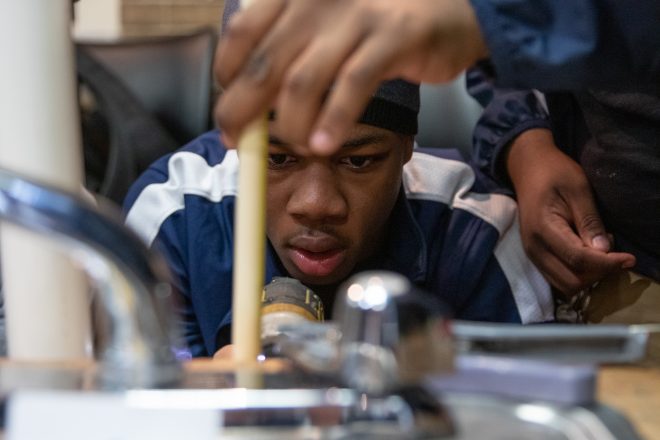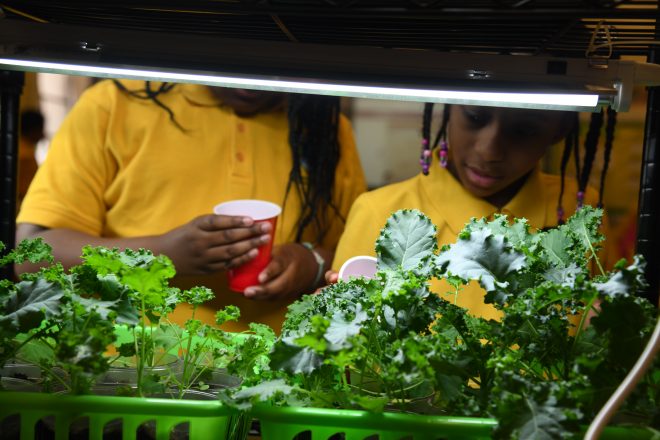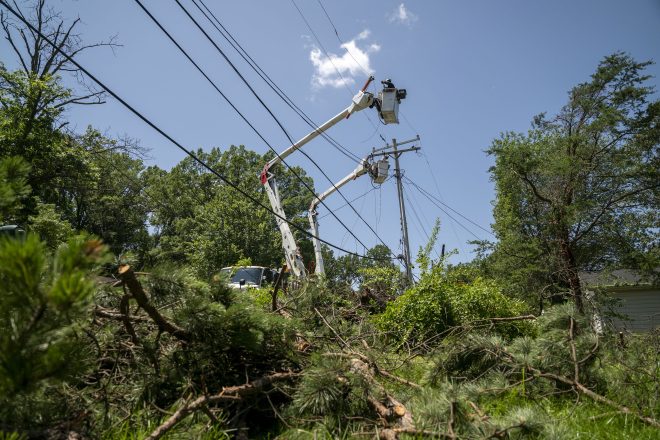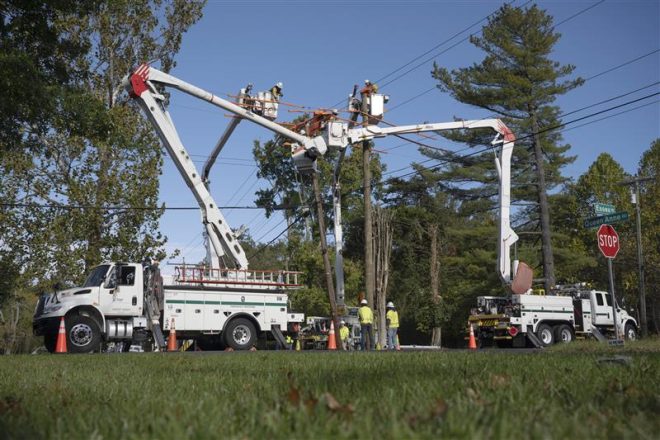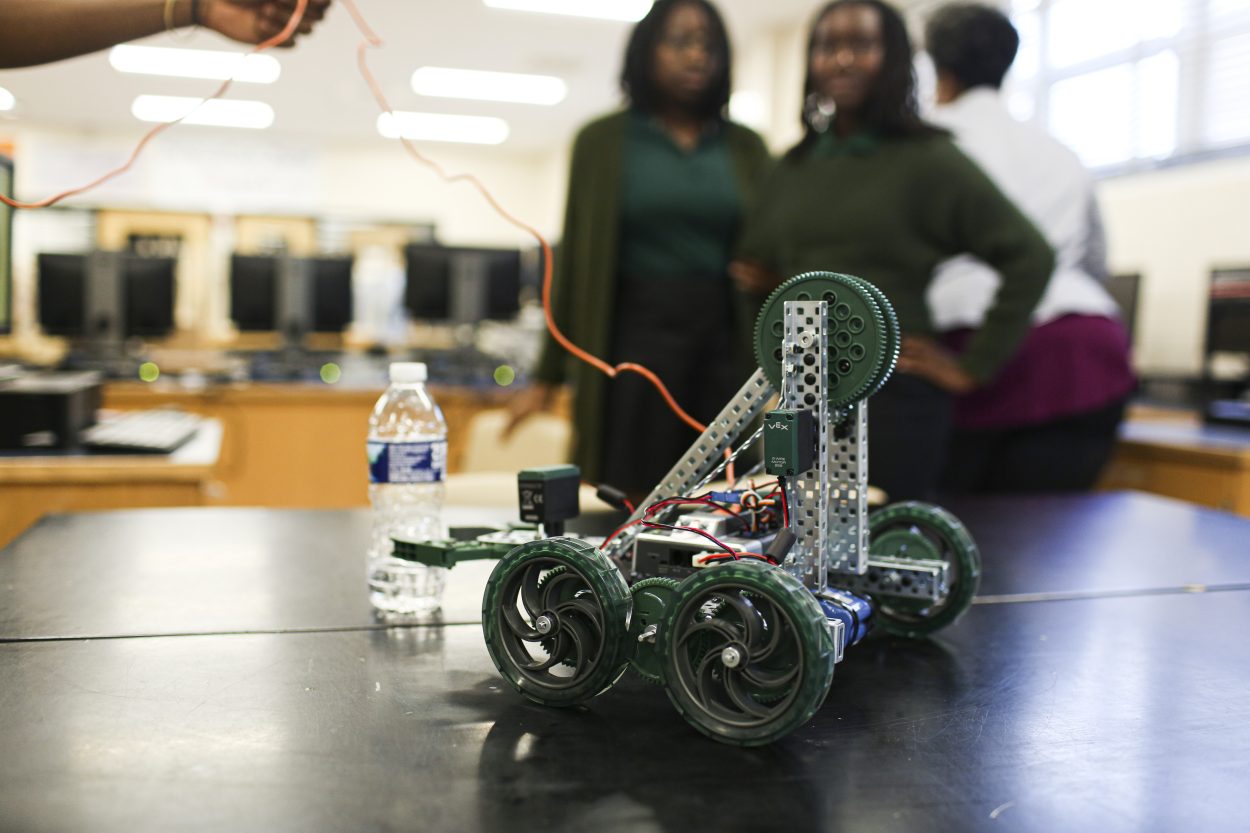
BGE’s Bright Ideas Teacher Grants helps students grow their STEM skills… “once they have done a real world project in high school, in college they just say ‘I’ve got this.’”
Victoria Lee loved every minute of her college senior project to identify a real-world problem and design a workable solution based on what she learned during her engineering studies. Then after spending too many years of her career in meetings as both the only woman and the only minority in the room, she decided the thing she loved more than problem solving was teaching engineering skills to young people.
She thought her break from her first career would be temporary, just long enough to inspire a generation of girls and increase the number of women in those engineering meetings. But 15 years later, Lee is now the architect and mentor for Project Lead the Way at Charles Herbert Flowers High School in Prince George’s County, Md. She is preparing high school students for engineering careers the way she prepared in college, giving them a head start to working in ways they once believed impossible.
“I met so many kids who had misconceptions about what it meant to be an engineer,” Lee explained. “They thought you drove a train!” Engaging students early helps them succeed in college, said Lee. “Once they have done a real world project in high school, in college they just say ‘I’ve got this.’”
Project Lead the Way, Grades 9 -12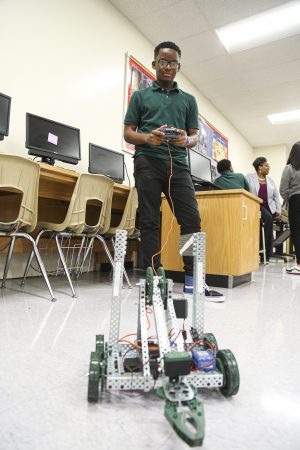
Project Lead the Way begins in ninth grade with hands-on engineering design using industry standard software like AutoDesk Inventor and AutoCAD. Teens keep an inspiration notebook and then design what they dream.
In their sophomore year, students absorb the basic principles of thermodynamics, fluids, digital electronics, mechanical advantage, programming, robotics and machinery operations.
Eleventh graders build their own, working circuit board, program it with binary code, and choose an engineering specialty like biomedical, civil architecture, aerospace or manufacturing. “They also love learning what is inside their phones and why it’s there,” jokes Lee.
By the time these students are seniors, they are fully prepared for their real-world college prep capstone project. The path is tough: identify a real-world problem; research and design a solution; test it; re-evaluate and adjust it; then present it to a panel of professional engineers who evaluate it. More than a few students have gone on to apply for patents as a result of this process.
While Lee can’t divulge the patent-pending inventions, she mentioned a project that stood out. Years ago, a blind student at the school carried two backpacks and could not use a locker with a combination lock. So, an engineering team invented a Braille lock with a location sensor so the blind student would know when he was near his locker and feel how to open it.
Lee’s course has one of the highest numbers of female participants compared to other Career and Technical Education (CTE) programs and she is grateful to her school, its professional advisory committee and BGE’s Bright Ideas Teacher Grants, (which she received for the past two years) for the program’s success. She also looks forward to seeing all those women change the gender ratio in those engineering meetings.
